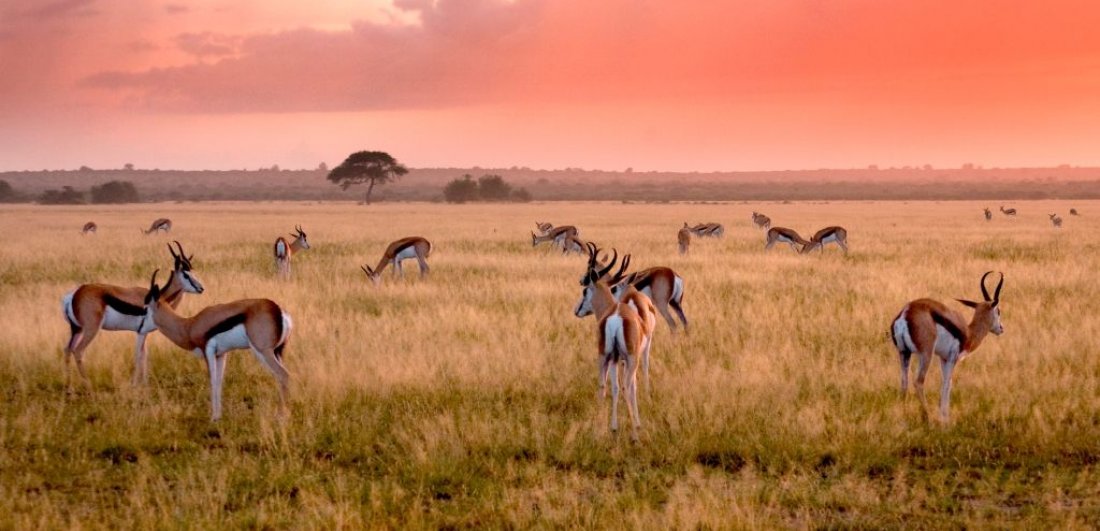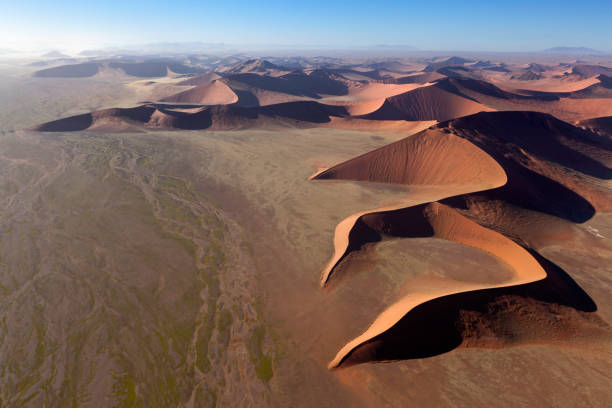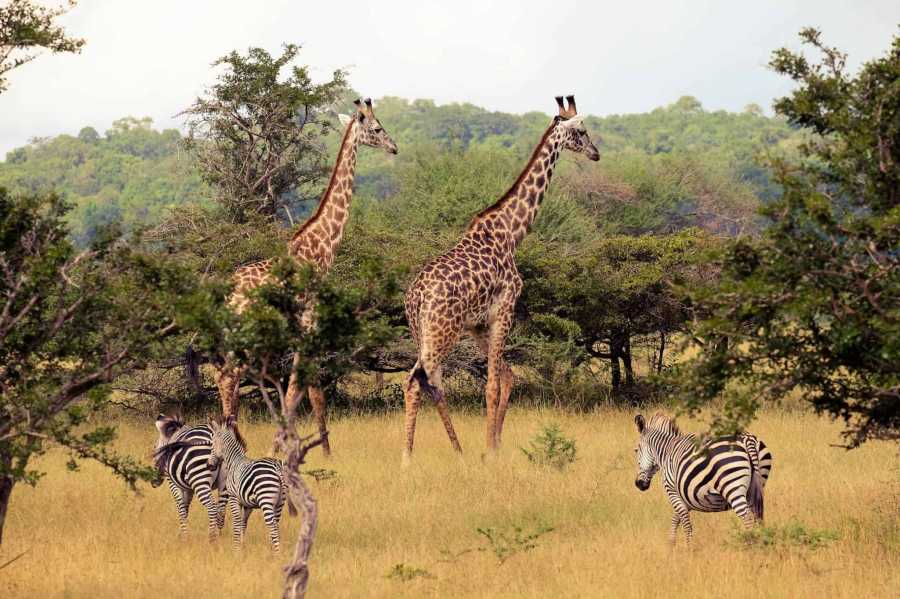THE LARGEST NATIONAL PARK / PROTECTED AREA IN AFRICA
The Largest National Park : You might be wondering what the largest national park in Africa is. Do not, however, mix national parks with game reserves. When it comes to Africa’s largest national parks, Namibia’s Namib-Naukluft National Park ranks first, followed by Tanzania’s Nyerere National Park, Zimbabwe’s Hwange National Park, and South Africa’s Kruger National Park. However, when we say “largest protected area in Africa,” we also mean game reserves, which are part of the protected area. The central Kalahari game reserve comes as the Africa’s largest protected area. The Selous game reserve was once number one, but after being split up into Nyerere National Park the central Kalahari game reserve took its place and now is the largest ahead of Selous game reserve in tanzania. The following are the list of largest protected areas In Africa (including both game reserves and national parks)

Central Kalahari Game Reserve
Botswana’s Central Kalahari Game Reserve is a large national park in Botswana’s Kalahari Desert. It was established in 1961 and now encompasses 52,800 square kilometers (20,400 square miles), making it Africa’s largest protected area. Previously, the largest protected in Africa was Tanzania’s Selous Game Reserve, which covered almost 54,000 square kilometers, but it was split up into Nyerere National Park, which today covers just 23,707 square kilometers.

The park was established in 1961 to protect endangered African species like wild dogs, and today you can see elephants, white rhinoceros, Cape buffalo, spotted hyena, brown hyena, honey badger, meerkat, yellow mongoose, warthog, cheetah, caracal, Cape wild dog, black-backed jackal, bat-eared fox, cape fox, leopard, lion, wildebeest, eland, sable antelope, gemsbok, springbok, steenbok, impala, greater kudu, aardvark, cape ground squirrel, cape hare, cape porcupine, red hartebeest and ostrich on your safari trip to this largest protected area in Africa.
The land is largely flat and moderately sloping, with sand dunes and patches of bigger trees covered in brush and grass. Salt pans have formed in several of the river valleys. Deception Valley, which formed some 16,000 years ago, is one of four fossilized rivers that meander through the reserve. Bushmen, sometimes known as San, have roamed the Central Kalahari National Park as nomadic hunters for thousands of years. Despite the government of Botswana’s attempts to transfer the famed African tribe throughout the 1990s, the San have been permitted to return to their reserve and dwellings.
The Central Kalahari National Park entrance fee
The cost varies depending on whether you’re camping or just visiting the reserve. Camping will cost BP30 per person per night, and park access will cost BP120
When to Go to Central Kalahari National Park
Many people choose to go on safari at this Africa’s largest protected area between June and October, when it is at its busiest. The ever-changing face of the landscape, on the other hand, makes it a delightful experience all year. The desert is turned into a lush park filled with fresh, delicious grass during the wet season (November to March). Meanwhile, the harsh environment is hauntingly lovely in the winter.
Tourism Activities at Central Kalahari National Park
Due to the diversity of animal species, game drives are one of the tourist activities in the central Kalahari national park. Swap the 4×4 for a horse and go on a riding excursion through the forest for a unique Tanzania safari experience. Horse safaris are ideal in the huge plains and open woodlands. Camping is another popular option to explore the game reserve, and spending the night on the Makgadikgadi Saltpans is an unforgettable experience. These secluded wilderness lodges, well off the usual path, are the ideal place to stay for close encounters with wildlife and a chance to get away from it all.
Other large protected areas in Africa include the following:
Namib-Naukluft National Park.
The Namib-Naukluft Park is a national park in western Namibia that is located between the Atlantic Ocean’s coast and the Great Escarpment’s edge. It includes a portion of the Namib Desert (the world’s oldest desert), the Naukluft mountain range, and Sandwich Harbour’s lagoon. Sossusvlei, a clay pan surrounded by sand dunes, and Sesriem, a short canyon of the Tsauchab, are the park’s most well-known features and one of Namibia’s most popular tourist destinations. It covers 49,000 square kilometers, making it Africa’s second largest national park after Botswana’s Central Kalahari Game Reserve. Mountains, sand seas, moonscape oases, and riverbeds make up the Namib Naukluft.

Large Namibian fauna, including the black rhino and herds of gemsbok, Hartmann’s mountain zebra, springbok, ostrich, and giraffe, as well as predators like spotted and brown hyena, leopard, and cheetah, call the Namib Desert home. In short, the Namib Naukluft is one of the best areas in Africa to see desert wildlife and offers the ultimate in desert safaris.
Niassa Reserve, Mozambique
Mozambique’s Niassa Reserve is a natural reserve in Mozambique’s Cabo Delgado and Niassa provinces. It is Africa’s third largest protected area, covering 42,000 square kilometers (10,000,000 acres), and Mozambique’s largest. A natural corridor of forestry concessions connects it to the Selous Game Reserve in southern Tanzania, and a natural corridor of forestry concessions connects it to the Quirimbas National Park on the coast of northern Mozambique.
It covers 31% of Mozambique’s protected area and is home to the country’s largest animal populations, including elephants, lions, leopards, wild dogs, sable, kudu, wildebeest, and zebra.
Nyerere National Park, Tanzania
Tanzania’s Nyerere National Park is the country’s newest national park. It is Tanzania’s largest national park and one of the world’s largest wildlife sanctuaries and national parks, having been separated from the Selous game reserves. The park covers a total area of 30,893 km2 (11,928 sq mi), making it Africa’s fourth largest protected area after the Central Kalahari Game Reserve, Namib-Naukluft National Park, and Mozambique’s Niassa Reserve.

Lions, wildebeests, giraffes, zebras, hippopotamuses, rhinos, antelopes, hyenas, African wolves, and a high number of crocodiles in the Rufiji River can all be found at Nyerere National Park. The park’s most famous feature is its large population of African Wild Dogs. Selous Game Reserve, and by extension, Nyerere National Park, used to be home to a significant number of elephants, but poaching has reduced their numbers, and it is now anticipated that transforming a portion of the reserve to a National Park will assist control and prevent poaching.


